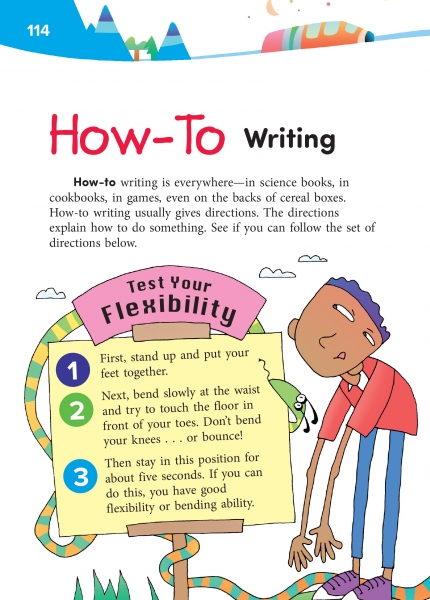Page 114 from

Start-Up Activity
Have your students stand beside their desks. Read the instructions under "Test Your Flexibility," asking students to perform the actions as you read them aloud. Afterward, have them raise their hands if they have good flexibility.
Have your class sit again and ask them about the flexibility test:
-
How did you know what to do? (We listened. You told us what to do. Each line starts with a command verb.)
-
How did you know what order to do things? (The steps are numbered. They appear in time order. They also start with "First," "Next," and "Then.")
Explain to your students that instructions tell readers how to do something. Ask students what they know how to do or make, and let them know they will be writing their own how-to instructions.
Think About It
“Directions are instructions given to explain how. Direction is a vision offered to explain why.”
—Simon Sinek

Start-Up Activity
Have your students stand beside their desks. Read the instructions under "Test Your Flexibility," asking students to perform the actions as you read them aloud. Afterward, have them raise their hands if they have good flexibility.
Have your class sit again and ask them about the flexibility test:
-
How did you know what to do? (We listened. You told us what to do. Each line starts with a command verb.)
-
How did you know what order to do things? (The steps are numbered. They appear in time order. They also start with "First," "Next," and "Then.")
Explain to your students that instructions tell readers how to do something. Ask students what they know how to do or make, and let them know they will be writing their own how-to instructions.
Think About It
“Directions are instructions given to explain how. Direction is a vision offered to explain why.”
—Simon Sinek